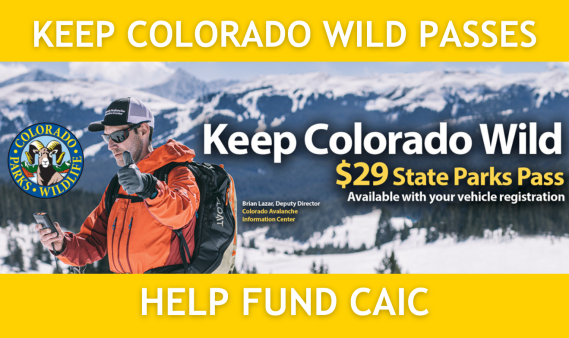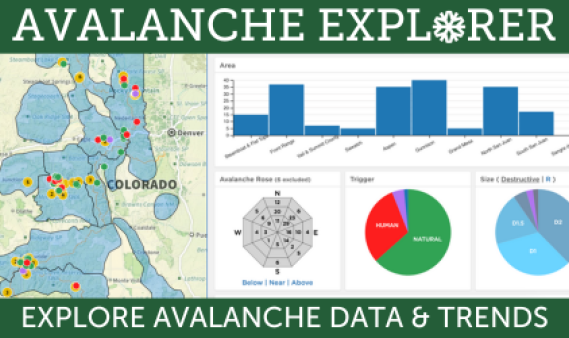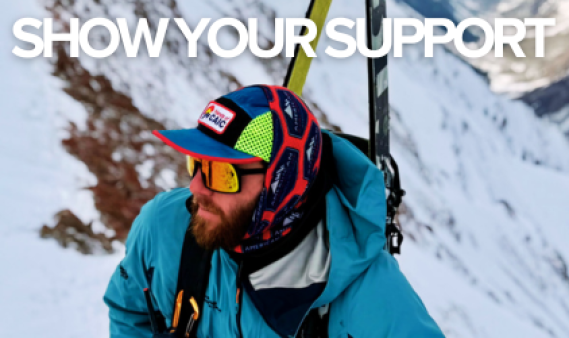Keep Colorado Wild Passes help fund CAIC. For $29, you'll get entry to all state parks while also supporting CAIC’s avalanche safety programs and more!

Keep Colorado Wild

Explore Avalanche Data
Our interactive Avalanche Explorer tool makes it easy to explore avalanche data, spot patterns, and better understand current conditions to stay safe out there.

Support Avalanche Forecasting!
Show off your support of avalanche forecasting in Colorado with Friends of CAIC logo gear
